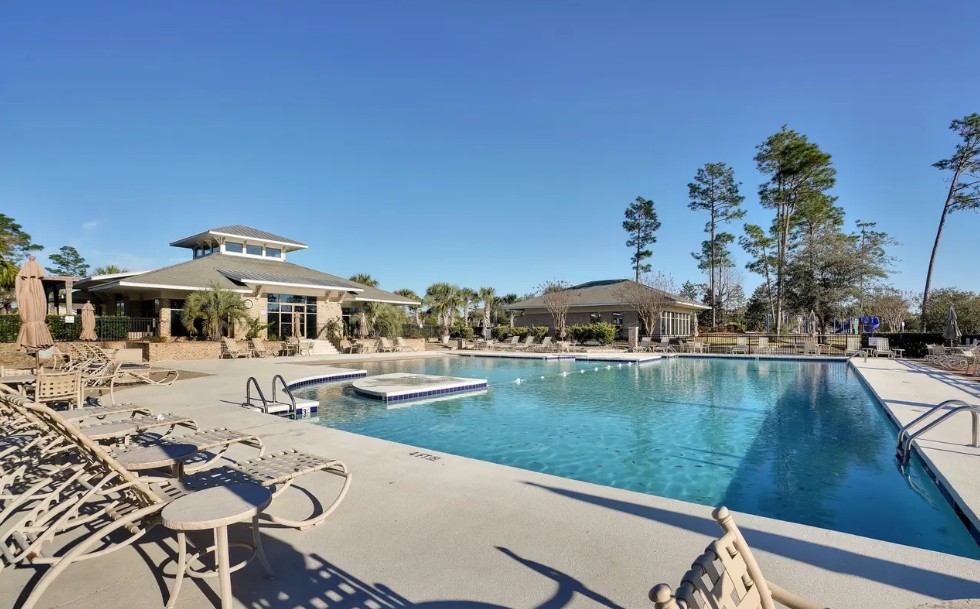Vacation Rental Pricing Strategy
-
- Traditional Pricing Approaches in Vacation Rentals
- Dynamic Pricing Strategies in Vacation Rentals
- Competitive Analysis
- Guest Segmentation and Targeting
- Reviews and Feedback Impact on Pricing
- Guest Experience and Value-added Services
- Marketing and Distribution Strategies
- What Are Some Tools or Software Available to Help with Vacation Rental Pricing Strategy
- Avoiding Common Pricing Mistakes in Vacation Rental Pricing Strategy
The vacation rental market has experienced significant growth in recent years, providing property owners with a lucrative opportunity to generate income from their properties. However, in order to succeed in this competitive market, property owners need to develop an effective pricing strategy that maximizes profitability.
In order to establish a successful pricing strategy for vacation rentals, property owners need to have a thorough understanding of the key factors that influence rental pricing.
- The location of a vacation rental property is a fundamental pricing factor. Properties situated in highly sought-after locations, such as popular tourist destinations, beachfront areas, or city centers, generally command higher rental rates due to their desirability and convenience. Property owners should consider the unique aspects of their location, such as proximity to attractions, accessibility, and local amenities, when determining pricing strategies.
- The size and amenities offered by a vacation rental property greatly impact its rental value. Larger properties with more bedrooms and bathrooms can accommodate larger groups, making them attractive to families or groups of travelers. Additionally, properties with desirable amenities such as swimming pools, hot tubs, fully equipped kitchens, or unique features like a private balcony or stunning views, can justify higher rental rates. Property owners should assess their property's size, layout, and amenities to determine competitive pricing that reflects its value.
- Seasonality and market demand have a significant influence on vacation rental pricing. Peak travel seasons, holidays, and local events often witness a surge in demand, allowing property owners to command higher rental rates during these periods. On the other hand, low-demand seasons may require more competitive pricing to attract bookings. Property owners should analyze historical booking data, local events calendars, and market trends to adjust prices according to seasonality and maximize occupancy and revenue.
- Conducting a thorough market comparison and competitor analysis is essential for setting competitive rental rates. Property owners should research similar vacation rental properties in their area, considering factors such as location, size, amenities, and pricing. This analysis helps property owners understand the market landscape, identify their unique selling points, and set prices that align with the value they offer compared to competitors.
Property owners can leverage these key pricing factors to set competitive and profitable rental rates. By considering the property's location, size, amenities, seasonality, and market demand, owners can strike a balance between attracting bookings and maximizing revenue. Adjusting prices dynamically based on demand fluctuations, offering promotional rates during low seasons, and providing additional value-added services can help property owners optimize their pricing strategies.
| Factors | Description |
| Location | Proximity to attractions, amenities, and popular destinations |
| Property Size | Number of bedrooms, bathrooms, and overall square footage |
| Amenities | Inclusion of features like a pool, hot tub, or balcony |
| Seasonality | Demand fluctuations based on high and low travel seasons |
| Market Demand | Overall interest and demand for vacation rentals |
| Competitor Rates | Rental rates charged by similar properties in the area |
| Special Events | Impact of local events or festivals on rental demand |
By leveraging these factors effectively, property owners can set prices that reflect the value of their property, attract bookings, and maximize profitability in the dynamic vacation rental market. For detailed information on establishing the optimal rental amount for short-term leases, please refer to the "Optimize rental pricing" section.

Traditional Pricing Approaches in Vacation Rentals
In the world of vacation rentals, property owners have employed various pricing approaches to attract guests and optimize profitability.
- Fixed pricing involves setting a consistent rental rate throughout the year, regardless of seasonality or demand fluctuations. This approach offers simplicity and ease of management for property owners. However, it may not fully capitalize on the potential revenue that can be generated during peak seasons or special events. To make the most of fixed pricing, property owners should conduct market research to determine a competitive and attractive rate that reflects the value of their property while remaining appealing to potential guests.
- Seasonal pricing adjusts rental rates based on the time of year, taking into account high and low-demand periods. Property owners can set higher rates during peak seasons when demand is high, and lower rates during off-peak seasons to attract guests and maintain occupancy. To implement seasonal pricing effectively, property owners should analyze historical booking data, local tourism trends, and market demand patterns. By strategically adjusting rates according to seasonality, property owners can maximize revenue during peak periods and maintain competitiveness during slower seasons.
- Weekend/weekday differentials involve charging different rates for bookings on weekends versus weekdays. This approach recognizes that weekends are typically in higher demand and allows property owners to adjust pricing accordingly. By setting higher rates for weekend stays and lower rates for weekday stays, property owners can capture additional revenue during peak demand periods while maintaining competitiveness during less busy times. Property owners should consider local events, business travel patterns, and the target audience when implementing weekend/weekday differentials.
| Approach | Description |
| Fixed Pricing | A consistent rental rate regardless of demand or season |
| Seasonal Pricing | Varying rates based on high and low travel seasons |
| Weekend/Weekday | Different rates for weekends and weekdays |
| Dynamic Pricing | Real-time adjustments based on market demand and other factors |
To maximize profitability using traditional pricing approaches, property owners can consider the following practical tips:
- Research and monitor market trends. Stay informed about market dynamics, competitor pricing, and local events to adjust rental rates accordingly.
- Utilize dynamic pricing tools. Explore technology solutions that automate pricing adjustments based on demand, availability, and competitor rates.
- Flexibility in pricing. Consider offering discounts or special promotions for longer stays, early bookings, or repeat guests to incentivize bookings and secure guest loyalty.
- Guest feedback and reviews. Pay attention to guest feedback and reviews to assess the perceived value of the property and make pricing adjustments accordingly.
- Regularly review and update pricing. Continuously evaluate the effectiveness of pricing strategies and make necessary adjustments based on performance, guest feedback, and market conditions.
By implementing these practical tips, property owners can optimize their pricing strategies, attract bookings, and increase profitability in the competitive vacation rental market.
Dynamic Pricing Strategies in Vacation Rentals
In today's fast-paced vacation rental market, property owners have embraced dynamic pricing as an effective strategy to maximize revenue and occupancy rates.
Dynamic pricing is a data-driven approach that allows property owners to adjust rental rates in response to changes in market conditions, demand patterns, and other influencing factors. By utilizing advanced algorithms and machine learning, property owners can optimize rental rates in real-time, taking into account factors such as seasonality, local events, competitor pricing, historical booking data, and even weather conditions. The goal is to find the optimal rate that attracts bookings, maximizes revenue, and maintains a competitive edge in the market.
To effectively implement dynamic pricing strategies, property owners can consider the following practical tips:
- Utilize dynamic pricing tools. Leverage technology solutions specifically designed for vacation rentals that automate the pricing process based on real-time data and market trends. These tools analyze multiple variables, such as occupancy rates, demand patterns, and competitor rates, to recommend optimal prices.
- Monitor competitor pricing. Stay informed about the rates set by competing properties in your area. Adjust your pricing accordingly to remain competitive and capture potential guests.
- Consider supply and demand dynamics. Assess the demand and supply of vacation rentals in your area and adjust prices to align with market conditions. Increase rates during high-demand periods and lower them during slower seasons to attract bookings.
- Be flexible with pricing. Offer discounts or promotions for last-minute bookings, extended stays, or fill gaps in your calendar. Adjust prices dynamically to incentivize bookings and maintain high occupancy rates.
- Monitor guest reviews and feedback. Regularly review guest feedback and ratings to assess the perceived value of your property. Use this information to make pricing adjustments that align with guest expectations.
- Stay up-to-date with market trends. Stay informed about local events, festivals, and major happenings that may impact demand for vacation rentals. Adjust pricing strategies accordingly to capture opportunities presented by these events.
By implementing these practical tips and leveraging dynamic pricing tools, property owners can effectively adapt their rental rates to changing market conditions, optimize revenue generation, and increase profitability in the vacation rental industry.
To delve deeper into the world of dynamic pricing, I invite you to explore the comprehensive article "Mastering Dynamic Pricing: Unlocking the Secrets to Boost Your Short-Term Rental Profits." In this insightful piece, you'll discover invaluable strategies, expert insights, and practical tips to optimize your pricing strategies and maximize your short-term rental earnings.

Competitive Analysis
In the vacation rental industry, understanding the competitive landscape is essential for property owners to develop effective pricing strategies.
Competitive analysis enables property owners to assess their position in the market, identify pricing trends, and understand the strategies employed by their competitors. By conducting a thorough competitive analysis, property owners can gain insights into the pricing models, occupancy rates, and unique selling points of their competitors. This knowledge allows them to make informed decisions about their own pricing strategy, ensuring competitiveness and maximizing profitability.
Conducting Competitive Analysis To conduct an effective competitive analysis, property owners can consider the following practical tips:
- Identify Key Competitors. Identify the vacation rental properties that directly compete with yours in terms of location, amenities, and target market. It is crucial to focus on properties that attract similar guests and offer similar features. This step helps you narrow down your analysis and gain a deeper understanding of the specific properties that impact your pricing decisions.
- Analyze Pricing Models. Examine the pricing models of your competitors. This includes analyzing their base rates, seasonal variations, minimum stay requirements, and any additional fees or discounts they offer. Compare these pricing strategies to your own and identify areas where you can make adjustments to attract more bookings or increase revenue.
- Assess Unique Selling Points. Identify the unique selling points of your competitors' properties. This may include amenities, location advantages, or specific features that set them apart. By understanding what makes your competitors attractive to guests, you can highlight your own unique features and adjust your pricing strategy accordingly.
- Monitor Market Demand. Stay informed about market demand and trends. This involves keeping track of occupancy rates, booking patterns, and guest preferences. By understanding the fluctuations in demand, you can adjust your pricing strategy to maximize revenue during peak periods and attract bookings during low-demand periods.
- Positioning Your Rental Property. Based on the insights gained from your competitive analysis, position your rental property effectively in the market. Determine your target audience and align your pricing strategy to appeal to that specific market segment. Highlight the unique features and value propositions of your property, emphasizing what sets it apart from competitors.
By conducting a thorough analysis of key competitors, analyzing pricing models, and positioning your rental property effectively, you can optimize your pricing strategy and increase profitability. By staying informed about market trends and utilizing technology tools for competitive analysis, property owners can stay ahead of the competition and attract more bookings in the dynamic vacation rental market.
To gain deeper insights into the intricacies of competitor analysis and discover effective strategies for staying ahead in the competitive landscape of short-term rentals, I encourage you to delve into the comprehensive article titled "Mastering Competitor Analysis in Dynamic Pricing for Short-Term Rentals". This enlightening piece offers valuable guidance, expert perspectives, and actionable tips to help you navigate the realm of competitor analysis with confidence.

Guest Segmentation and Targeting
In the vacation rental industry, guest segmentation and targeting play a crucial role in developing an effective pricing strategy.
Guest segmentation involves categorizing guests into distinct groups based on common characteristics, preferences, and behaviors. By segmenting guests, property owners can better understand their needs and tailor their pricing strategies to meet their specific expectations. Targeting specific guest segments allows property owners to attract the right guests, maximize occupancy rates, and optimize revenue.
To identify target guest segments, property owners can consider the following practical tips:
- Analyze historical booking data. Review your historical booking data to identify patterns and trends among your guests. Look for similarities in guest demographics, booking preferences, length of stay, and booking sources. This analysis will help you identify the segments that have shown consistent interest in your property.
- Conduct surveys and collect feedback. Engage with your guests by conducting surveys and collecting feedback. Ask them about their preferences, motivations for choosing your property, and what factors influenced their booking decision. This information will provide valuable insights into the specific needs and expectations of your target guests.
- Monitor guest reviews and ratings. Pay close attention to guest reviews and ratings on online platforms. Analyze the feedback provided by guests to understand what aspects of your property they value the most and areas where improvements can be made. This will help you align your pricing strategy with the features that matter most to your target guests.
- Research local market and tourism trends. Stay updated on local market trends, tourism statistics, and upcoming events in your area. Understand the types of guests that are typically attracted to your location and tailor your pricing strategy to align with their preferences. For example, if your property is in a popular beach destination, consider adjusting pricing based on high-demand periods during the summer season.

Once you have identified your target guest segments, it's important to tailor your pricing strategies to attract and retain them. Consider the following practical tips:
- Create package deals or special offers that cater to the specific preferences of your target guest segments. For example, if your property is popular among families, offer discounted rates for longer stays or include additional amenities and services that appeal to families.
- During low-demand periods, consider offering competitive rates or discounts to attract guests. Adjusting pricing during off-peak seasons can help increase occupancy rates and generate revenue during typically slower periods.
- Craft personalized communication and marketing messages targeted at your identified guest segments. Highlight the unique features and experiences your property offers that align with their preferences. By showcasing how your property caters to their needs, you can increase their interest and likelihood of booking.
- Implement loyalty programs or incentives for repeat guests. Offer discounts or exclusive benefits to guests who have previously stayed at your property. This encourages guest loyalty and increases the likelihood of repeat bookings.
Guest segmentation and targeting are vital in vacation rental pricing strategies. By identifying target guest segments, understanding their preferences, and tailoring pricing strategies to attract and retain them, property owners can maximize occupancy rates, optimize revenue, and build long-term guest relationships.
Reviews and Feedback Impact on Pricing
Guest reviews and feedback play a significant role in shaping the pricing strategies of vacation rentals.
Guest reviews and feedback have a direct impact on the reputation and success of vacation rentals. Potential guests heavily rely on reviews when making booking decisions, considering them as an indicator of the overall quality and value of a property.
As such, reviews can significantly influence pricing strategies in the following ways:
- Positive reviews highlighting exceptional experiences, cleanliness, amenities, and customer service create a perception of value for potential guests. This positive perception justifies higher rental rates and allows property owners to price their rentals competitively.
- Guest reviews contribute to building trust and credibility for a vacation rental. Positive reviews act as social proof, assuring potential guests that others have had positive experiences. This trust and credibility give property owners the confidence to set prices that reflect the quality and desirability of their rentals.
- Guest reviews and feedback provide property owners with insights into their unique selling points and areas of improvement. By leveraging positive reviews, property owners can differentiate themselves from competitors and justify higher prices based on exceptional guest experiences and positive feedback.

To maximize the impact of guest reviews on pricing and overall rental success, property owners can consider the following practical tips:
- Respond promptly and politely to guest reviews, both positive and negative. Acknowledge positive feedback and express gratitude to guests for their kind words. For negative reviews, address any concerns or issues raised and demonstrate a commitment to resolving them. By showing responsiveness, property owners can build trust and establish a positive reputation.
- Take guest feedback seriously and use it to identify areas for improvement. Address any recurring concerns or issues raised in reviews, such as cleanliness, amenities, or communication. By actively addressing these concerns, property owners can enhance guest satisfaction, leading to positive reviews and increased pricing opportunities.
- Encourage guests to leave reviews by providing gentle reminders and incentives. Consider sending a follow-up email or message after their stay, thanking them for choosing your property and kindly requesting their feedback. Positive reviews generated through proactive guest engagement contribute to a stronger reputation and support higher pricing.
By managing and responding to reviews, improving guest satisfaction, and using positive feedback to justify pricing decisions, property owners can enhance their reputation, build trust with potential guests, and optimize their rental rates.
Guest Experience and Value-added Services
Creating an exceptional guest experience and offering value-added services can have a significant impact on vacation rental pricing. By providing added value and exceeding guest expectations, property owners can justify higher rental rates, increase guest satisfaction, and ultimately enhance profitability.
Creating a memorable and enjoyable guest experience is key to attracting repeat bookings and positive reviews.
Here are some practical tips for property owners to enhance the guest experience:
- Ensure that your vacation rental property is well-maintained and clean. Regularly inspect the property, address any maintenance issues promptly, and provide essential amenities to ensure a comfortable stay for your guests.
- Streamline the check-in and check-out processes to make them as smooth and convenient as possible for guests. Provide clear instructions, offer self-check-in options, and be responsive to guest inquiries and requests during their stay.
- Add personal touches to create a welcoming and personalized experience for guests. Consider leaving a welcome basket, providing local recommendations, or offering complimentary amenities such as toiletries, snacks, or beverages.
- Maintain open and prompt communication with guests throughout their booking process and stay. Respond to inquiries and requests in a timely manner, address any concerns or issues promptly, and provide clear and detailed information to ensure a stress-free experience for guests.
Marketing and Distribution Strategies
Marketing and distribution strategies play a crucial role in maximizing the visibility and bookings of vacation rental properties. In conjunction with effective pricing strategies, these strategies can help property owners attract more guests, increase occupancy rates, and ultimately boost profitability.
To stand out in a competitive market, property owners must market their vacation rentals effectively. Here are some practical tips to enhance property marketing efforts:
- High-quality photos and descriptions. Captivating, high-quality photos and detailed property descriptions are essential for attracting potential guests. Showcase the unique features and amenities of the property to entice guests and give them a clear idea of what to expect.
- Engaging online listings. Create compelling and informative online listings across multiple platforms, including your own website, online travel agencies (OTAs), and social media. Highlight the property's unique selling points, proximity to attractions, and any additional services or perks offered.
- Guest reviews and testimonials. Positive guest reviews and testimonials are powerful marketing tools. Encourage guests to leave reviews and testimonials after their stay and respond to them promptly. Display these reviews on your website and listings to build trust and credibility among potential guests.
- Leverage social media platforms to showcase your vacation rental property, engage with potential guests, and share valuable content related to the local area. Create visually appealing posts, collaborate with influencers, and run targeted advertising campaigns to reach a wider audience.
Online Travel Agencies (OTAs) Partnering with OTAs can significantly expand the reach of your vacation rental property.
- Direct booking channels. Optimizing direct booking channels can help property owners maximize revenue and build a loyal customer base. Consider the following strategies:
- User-friendly website. Invest in a well-designed and user-friendly website for your vacation rental property. Ensure that the booking process is seamless, provide detailed information about the property, and offer online booking capabilities to encourage direct bookings.
- Loyalty programs and special offers. Implement loyalty programs or offer exclusive discounts and perks for guests who book directly through your website. This encourages repeat bookings and strengthens customer loyalty.
- Email marketing campaigns. Build an email list of past guests and potential leads and leverage email marketing campaigns to promote special offers, seasonal discounts, and updates about your property. Personalize your emails to create a personalized experience for each recipient.
- Direct booking incentives. Offer incentives for guests to book directly through your website, such as free upgrades, welcome packages, or flexible cancellation policies. Emphasize the advantages of booking directly, such as better rates, personalized customer service, and direct communication with the property owner.
Effective marketing and distribution strategies complement pricing strategies in maximizing the visibility, bookings, and profitability of vacation rental properties. By implementing these strategies and leveraging online platforms, property owners can attract more guests, optimize occupancy rates, and build a strong presence in the vacation rental market.

What Are Some Tools or Software Available to Help with Vacation Rental Pricing Strategy
To streamline your vacation rental pricing strategy and make informed decisions, there are several tools and software solutions available in the market. These tools leverage technology and data analysis to assist property owners in optimizing their pricing strategies. There are free or low-cost options for dynamic pricing tools for vacation rentals.
Here are some popular tools and software options that can support your vacation rental pricing strategy:
- PriceLabs is a dynamic pricing tool specifically designed for vacation rentals. It uses sophisticated algorithms to analyze market trends, competitor rates, and booking patterns. PriceLabs provides pricing recommendations and automates rate adjustments to maximize revenue and occupancy rates. PriceLabs offers a free trial and charges a flat monthly rate for its paid plans
- Beyond Pricing is another popular dynamic pricing tool that optimizes vacation rental rates based on real-time market demand, seasonality, and local events. It integrates with various property management systems and online platforms, allowing seamless rate adjustments and distribution. Beyond Pricing offers a free trial and charges 1% of all bookings for its paid plans.
- Wheelhouse offers a dynamic pricing platform that uses data-driven algorithms to set competitive rental rates. It factors in market demand, local events, and historical booking data to provide pricing recommendations. Wheelhouse also provides revenue management and reporting features. Wheelhouse is a dynamic pricing tool that offers a free version with limited features, as well as paid plans with more advanced features.
- MyVR is a property management system (PMS) that includes pricing management functionalities. It integrates with various booking platforms and provides tools for setting and adjusting rental rates. MyVR also offers data analytics and reporting features to help property owners make data-driven pricing decisions.
- AirDNA is a market data provider that specializes in vacation rental market analytics. It offers insights on market trends, competitor rates, and demand patterns. AirDNA's platform provides access to comprehensive market data and reporting tools to inform pricing decisions.
- Hostfully is a property management and pricing tool that allows property owners to manage their short-term rentals effectively. It offers features for setting rental rates, managing availability, and automating pricing adjustments based on demand and market conditions.
| Tool/Software | Description |
| PriceLabs | Dynamic pricing tool that analyzes market trends and competitor rates |
| Beyond Pricing | Dynamic pricing tool that factors in market demand and seasonality |
| Wheelhouse | Dynamic pricing platform that optimizes rental rates based on data |
| MyVR | Property management system with pricing management functionalities |
| AirDNA | Market data provider offering insights on market trends and competitor rates |
| Hostfully | Property management and pricing tool with automation features |
These are just a few examples of the many tools and software solutions available to assist with vacation rental pricing strategy. When selecting a tool, consider factors such as pricing accuracy, ease of use, integration capabilities with your existing systems, customer support, and any additional features that align with your specific needs. By leveraging these tools and software solutions, property owners can automate pricing adjustments, gain valuable market insights, and optimize revenue generation.
Avoiding Common Pricing Mistakes in Vacation Rental Pricing Strategy
What are some common pricing mistakes to avoid in vacation rental pricing strategy.
- One of the most common pricing mistakes in vacation rentals is underpricing the property. While it may seem tempting to set lower rates to attract guests, consistently underpricing can result in missed revenue opportunities. Property owners should conduct thorough market research, analyze competitor rates, and consider the unique features and value their property offers before setting the rental price.
- On the other hand, overpricing the vacation rental can lead to low occupancy rates and missed bookings. It is important to find a balance between maximizing rental income and maintaining competitive rates. Additionally, being flexible with pricing, especially during off-peak seasons or when there is lower demand, can help attract guests and maintain a steady flow of bookings.
- Failing to consider seasonality and market demand is another common pricing mistake. Vacation rental rates should reflect the fluctuating demand throughout the year. High-demand periods, such as holidays or local events, can justify higher rates, while lower-demand periods may require more competitive pricing to attract bookings. Property owners should analyze historical data, local events, and market trends to adjust pricing accordingly.
- Ignoring guest reviews and feedback. Guest reviews and feedback provide valuable insights into the guest experience and can influence future booking decisions. Ignoring or dismissing guest feedback when it comes to pricing can be a mistake. Property owners should pay attention to reviews that mention pricing concerns and consider making necessary adjustments if a consistent pattern emerges. Responding to guest feedback and addressing any pricing-related issues can improve guest satisfaction and help maintain competitive pricing.
- Lack of regular pricing analysis. Failing to conduct regular pricing analysis can hinder a vacation rental's profitability. Market conditions, competition, and guest preferences can change over time, and property owners should adapt their pricing strategies accordingly. Regularly monitoring and analyzing market data, occupancy rates, and competitor pricing can help identify opportunities for adjusting rates and staying competitive in the market.
- Overlooking additional fees and expenses. Pricing mistakes can also occur when property owners overlook additional fees and expenses associated with the vacation rental. It is important to account for cleaning fees, booking fees, taxes, and other charges when determining the overall rental price. Failing to consider these additional costs can result in miscalculating the profitability of the rental property.
By avoiding these pricing mistakes, vacation rental owners can increase revenue, improve guest satisfaction, and build a strong reputation in the industry.
By understanding the impact of pricing strategies, property owners can make informed decisions to optimize their pricing and maximize profitability in the vacation rental industry.
When conducting a comprehensive study on the topic, the following reliable and authoritative sources were consulted to gather valuable insights and information:
- Airbnb: The leading online marketplace for short-term rentals, offering data and pricing trends in various locations.
- VRBO: A popular platform for vacation rentals, providing market data and pricing analytics for effective dynamic pricing strategies.
- PriceLabs: A dynamic pricing tool designed specifically for short-term rental hosts, offering advanced algorithms and data-driven insights to optimize pricing decisions.
Sincerely,
William Anderson
Profit Dwelling
To discover a range of strategies to maximize profits from short-term rentals, refer to the "Optimize Rental Pricing" section for detailed insights and actionable recommendations.
Explore our additional articles on the topic of short-term rental pricing tools:
- The 8 Best Airbnb Pricing Tools
- The Impact of Guest Reviews on Short-term Rentals Pricing
- Pricelabs vs. Wheelhouse - Choosing the Best Pricing Tool for Your Short-Term Rental
- Vacation Rental Pricing Strategy
- Avoiding Mistakes in Dynamic Pricing for Short-Term Property Rentals
- Mastering Dynamic Pricing
- Mastering Competitor Analysis in Dynamic Pricing for Short-Term Rentals

Comments powered by CComment